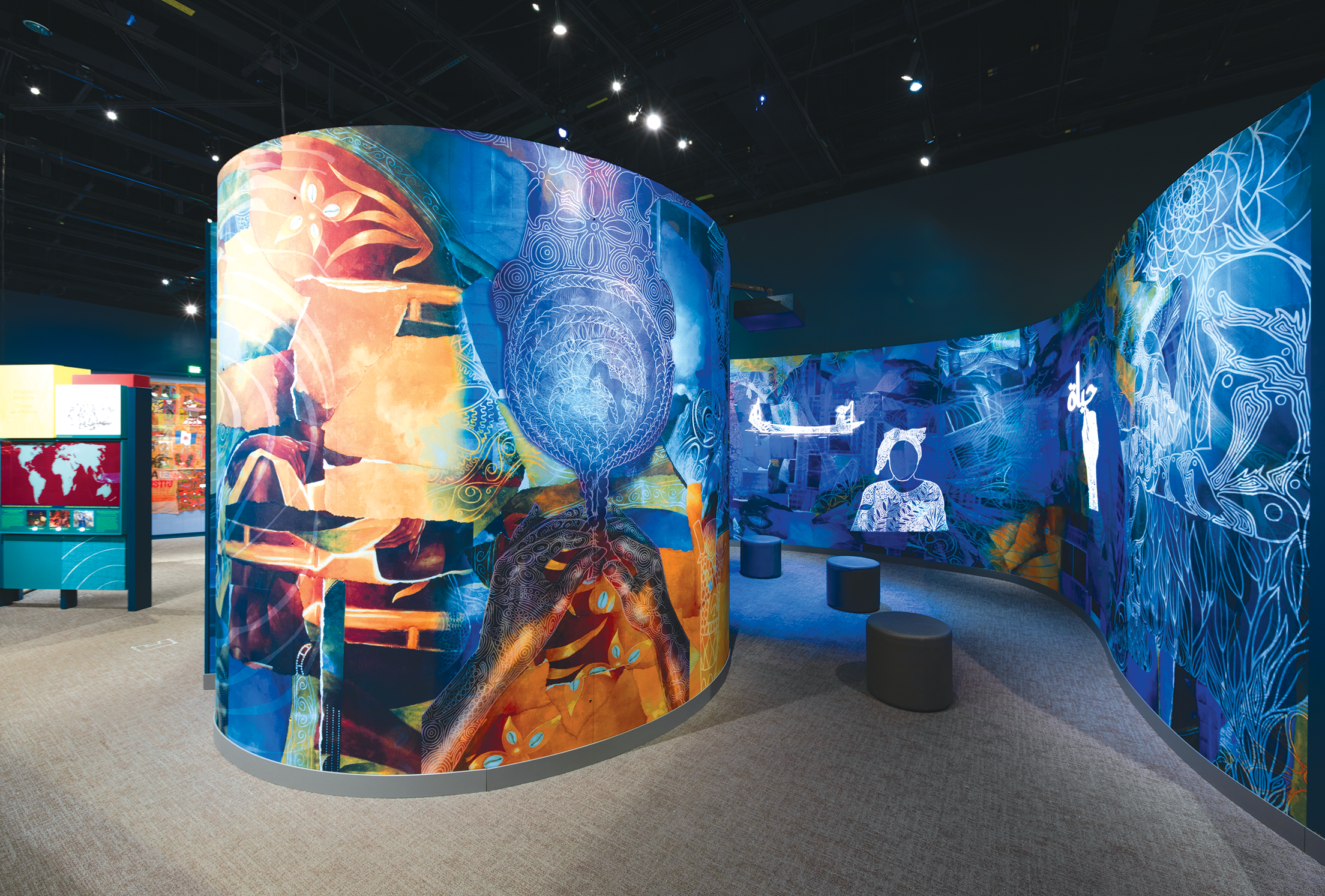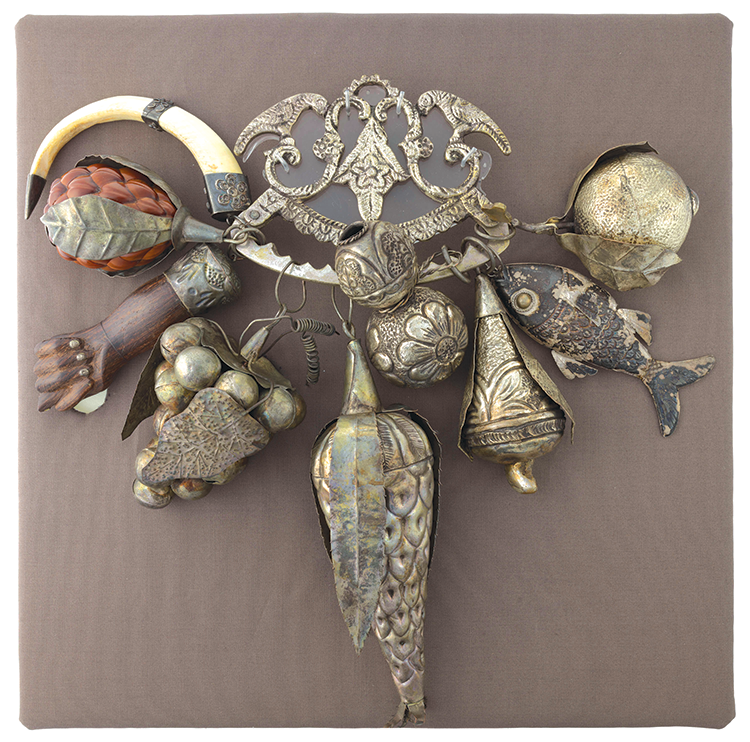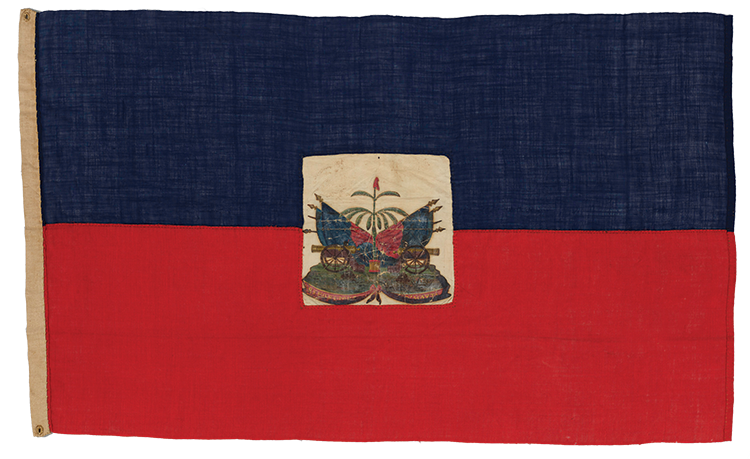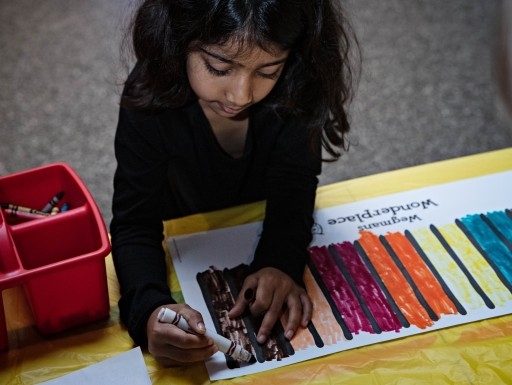
A violin, a charm bracelet, a national flag and a field cradle. These are among the many objects featured in a major new exhibition at the National Museum of African American History and Culture.
In Slavery’s Wake: Making Black Freedom in the World explores the history and enduring impact of the global slave trade through an understudied lens: the work of enslaved people and their descendants to build resilience and community through art, rebellion, spirituality and politics.
While the exhibition addresses the societal forces that fueled global slavery beginning in the late 15th century—trade, capitalism and exploitation, among others—it also highlights stories of enslaved, colonized and liberated peoples resisting oppression and shaping cultures across Africa, Europe and the Americas.

A Global Project
Organized by the museum’s Center for the Study of Global Slavery and the Ruth J. Simmons Center for the Study of Slavery and Justice at Brown University, In Slavery’s Wake grew out of a 10-year collaboration among more than two dozen international curators, scholars and community members across four continents.
Curators from this network identified a need to expand public understanding of the global, interconnected aspects of slavery and colonialism—topics that are often explored through national or local narratives.
“We’re talking about the way people resisted and held on to their humanity,” said Paul Gardullo, director, Center for the Study of Global Slavery and supervisory museum curator at the National Museum of African American History and Culture.
In Slavery’s Wake is the museum’s first international traveling exhibition, with showings planned from late 2025 through 2028 at partner museums in Belgium, Brazil, England, Senegal and South Africa. Each will incorporate region-specific objects and programming.
Oral Histories
The exhibition features more than 190 objects, voices drawn from nearly 150 newly filmed oral histories and newly commissioned artworks, using a variety of media to help visitors understand a complex topic.
“We wanted to put peoples’ voices and experiences front and center,” said Gardullo of the oral history initiative. “In South Africa, for example, we interviewed people who work on wine farms. There is a direct link to people who were enslaved on vineyards and people working on these farms today.”
In the United States, curators interviewed residents of Africatown, Ala., many of whom are descended from enslaved people trafficked on the Clotilda, the last known slave ship to arrive in the United States, in 1860.
In Slavery’s Wake runs through June 8, 2025, in the National Museum of African American History and Culture’s Bank of America Special Exhibitions Gallery. It is complemented by a 240-page catalog, published by Smithsonian Books in collaboration with the museum.
The exhibition was made possible through the support of Abrams Foundation, The Ford Foundation, Robert Wood Johnson Foundation, members of the National Museum of African American History and Culture, Dr. Ruth J. Simmons and the National Museum of African American History and Culture’s Corporate Leadership Council.
To learn more about In Slavery’s Wake and watch selected oral history interviews, visit: nmaahc.si.edu/inslaveryswake

Published Winter 2025 in IMPACT Vol. 11. No 1
Your gift fuels innovation, inspiration and exploration for lifelong learners everywhere. Make a gift today.



